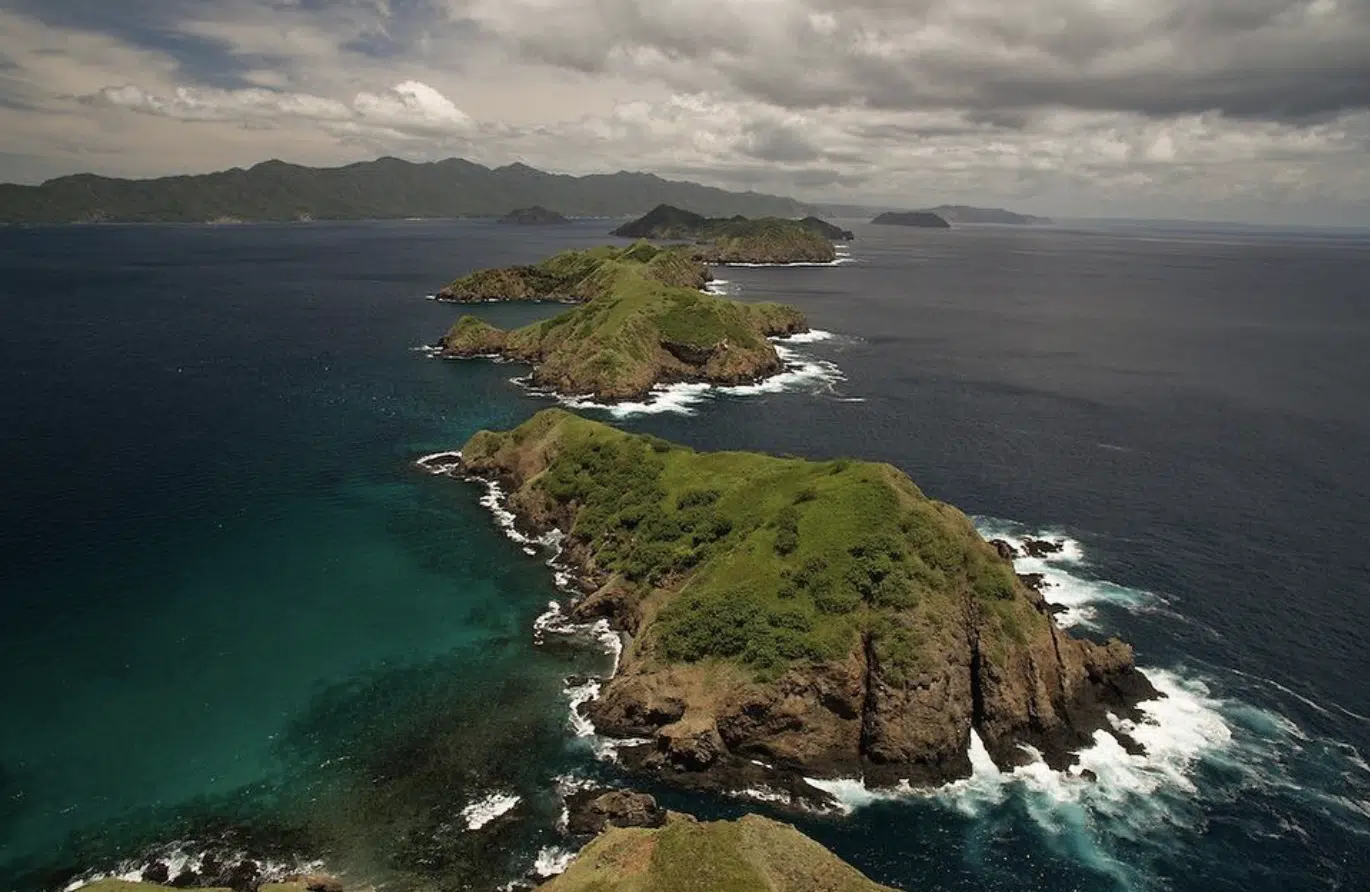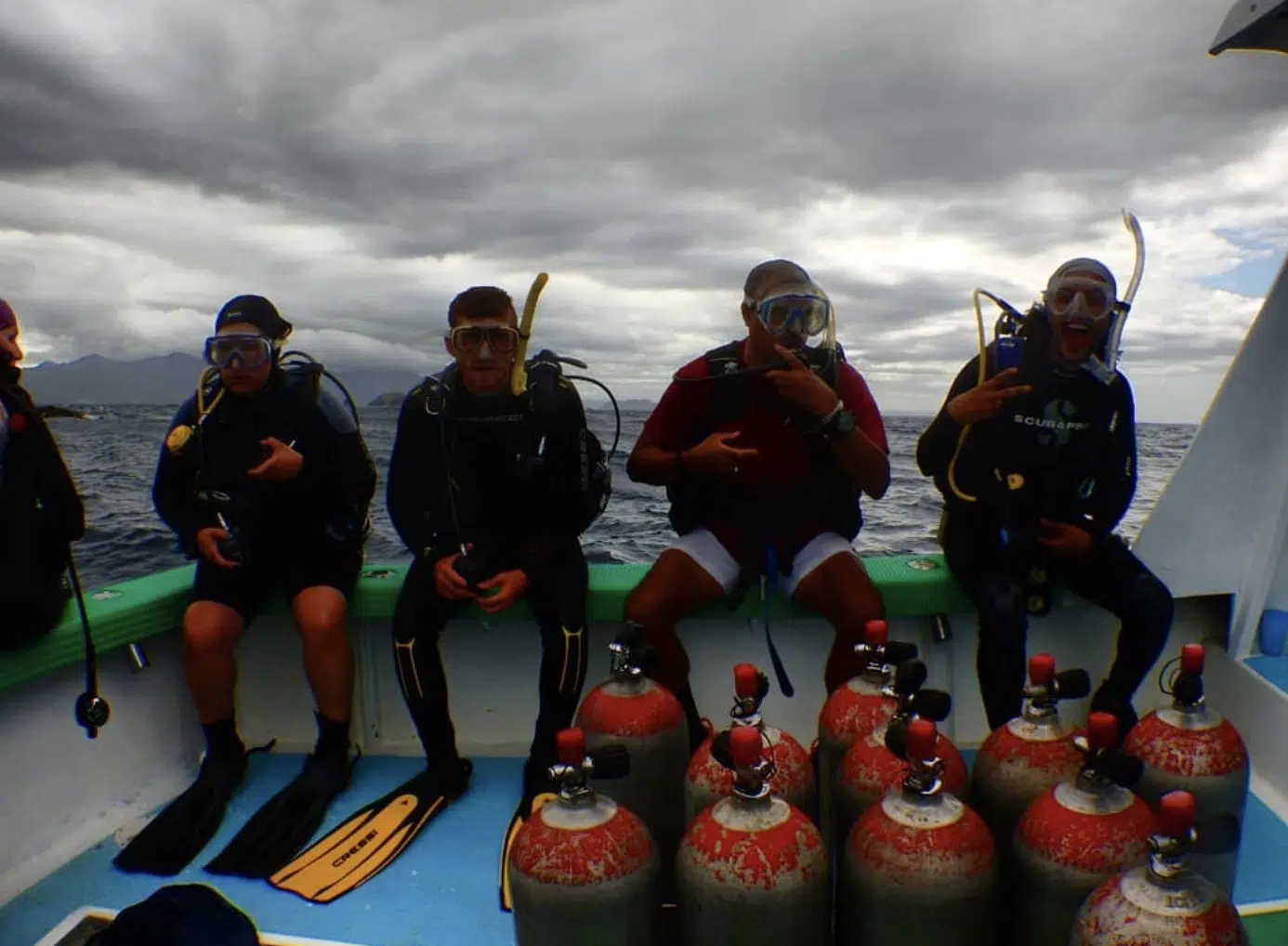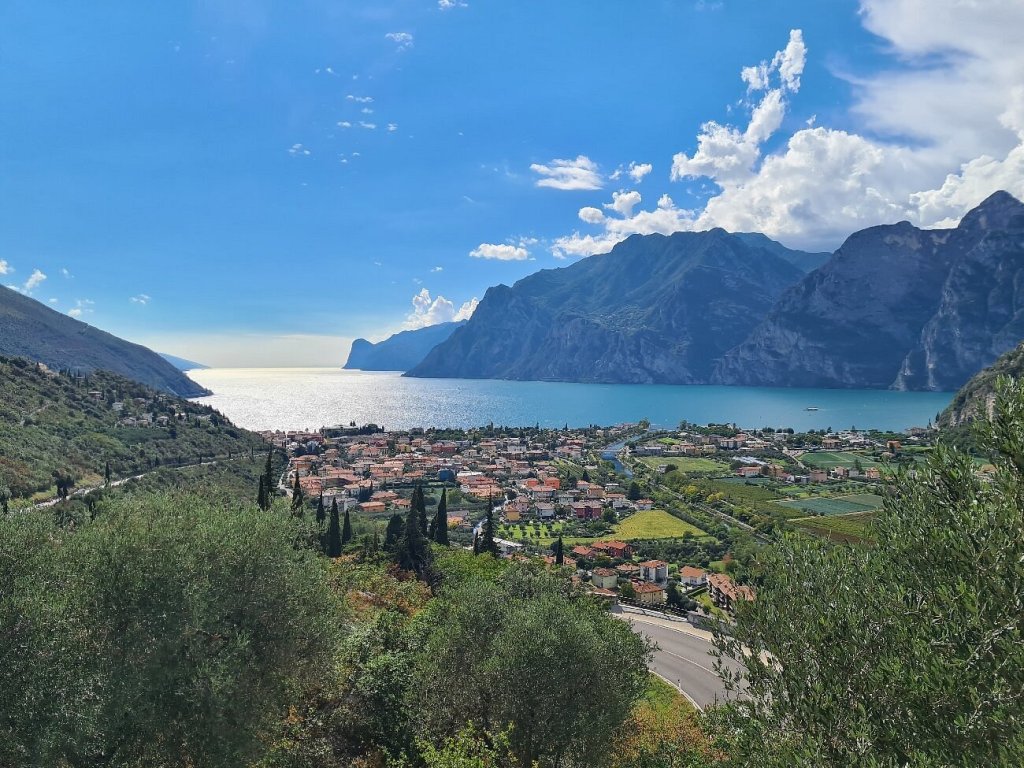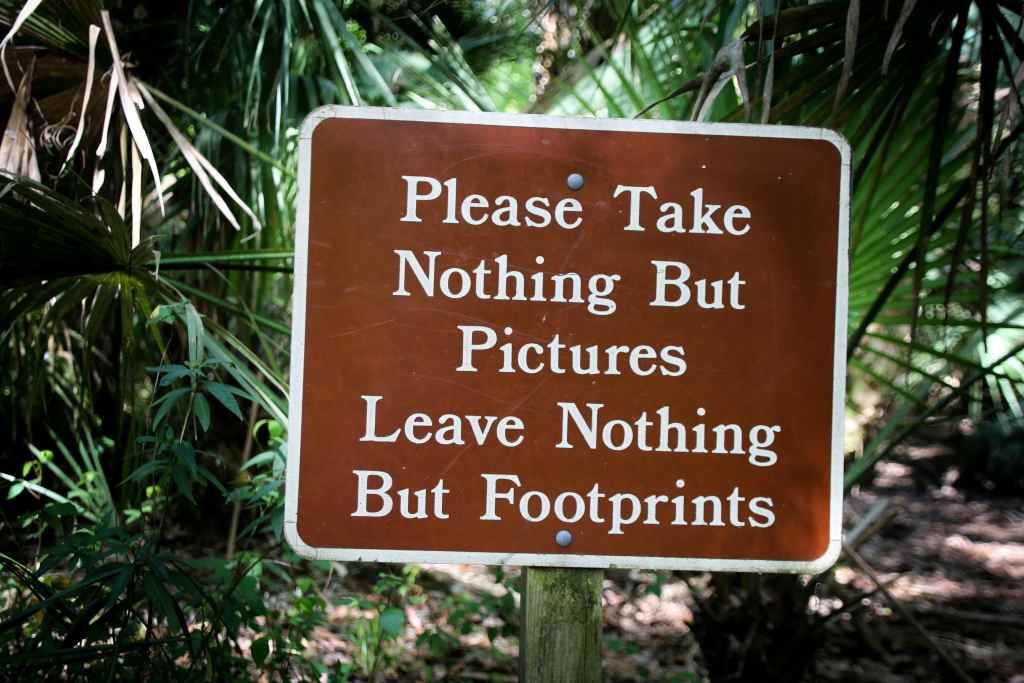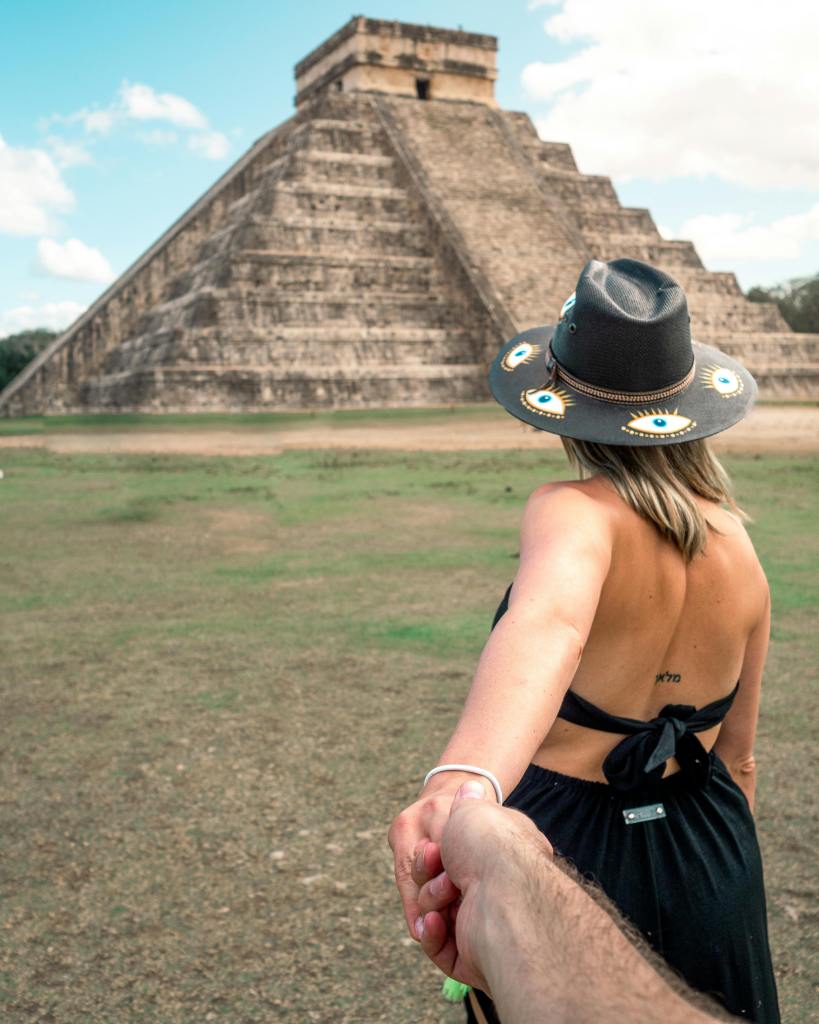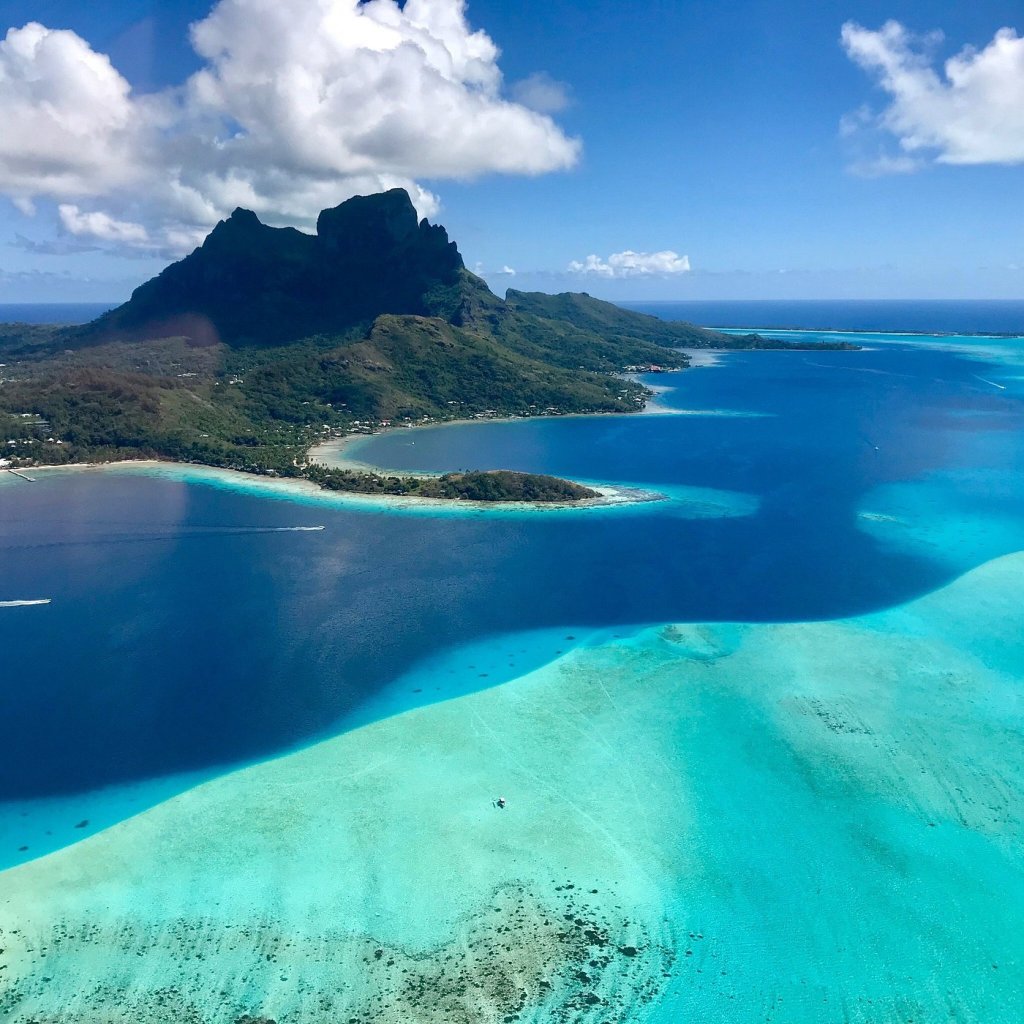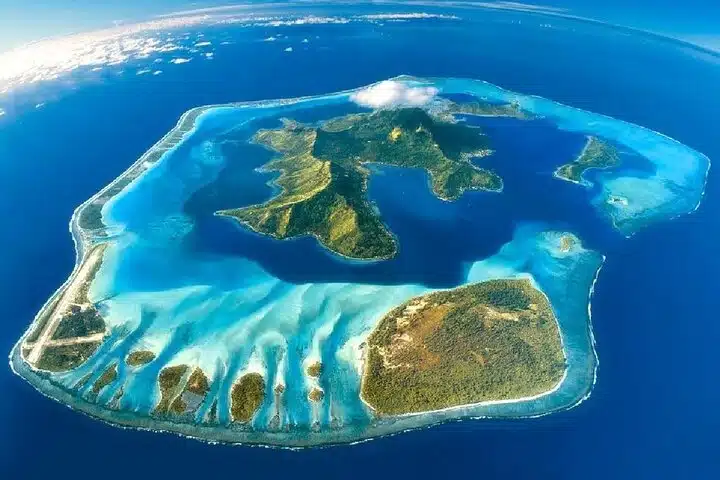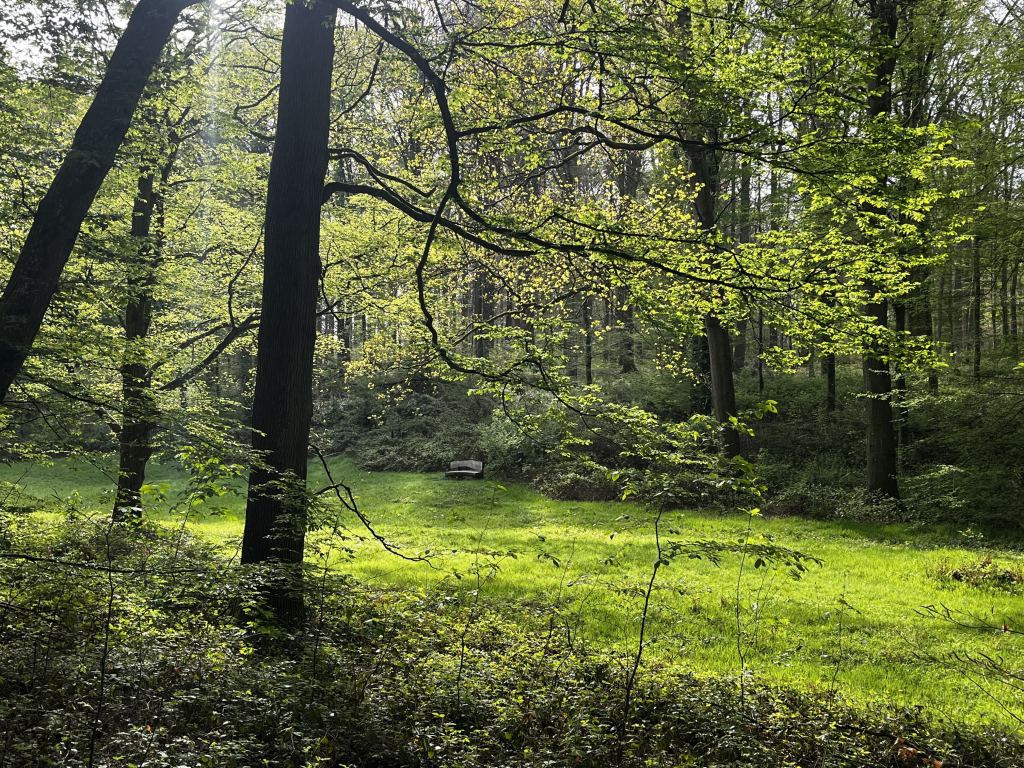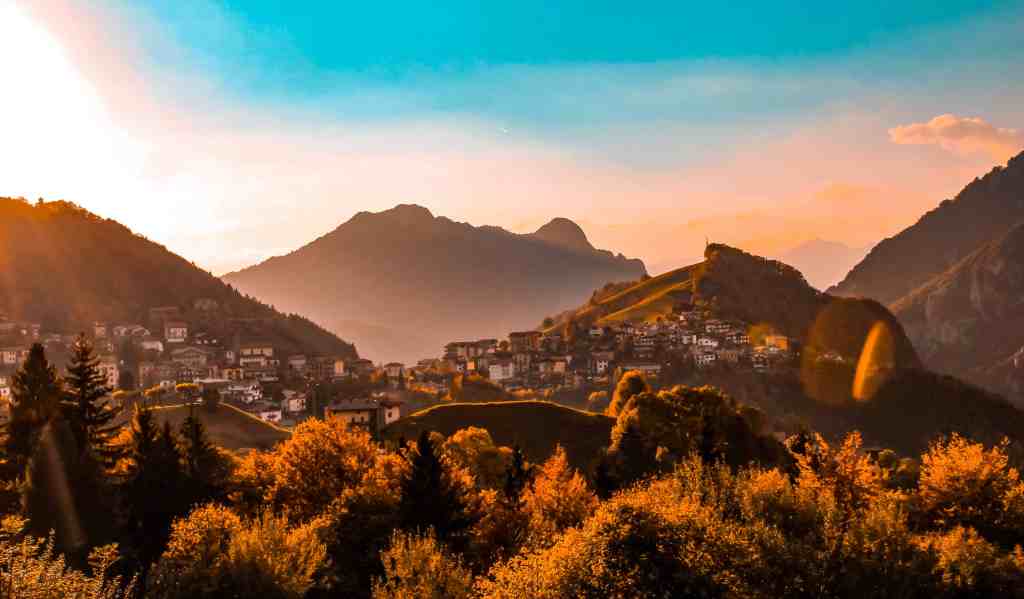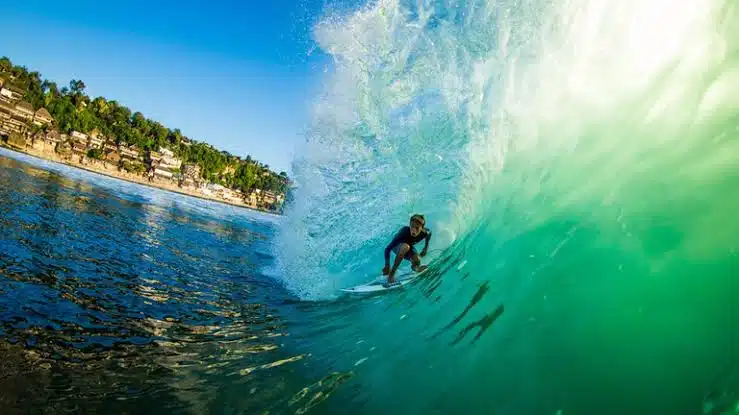Welcome to the ULTIMATE GUIDE to scuba diving at BAT ISLANDS! The islands are one of the BEST scuba diving destinations in Costa Rica. But is it worth visiting? Keep reading to find out!
Let’s get started.
Do you want to know what to expect from scuba diving at the Bat Islands in Guanacaste, Costa Rica? Check out the video below!
Key Takeaways:
- Diving Attractions: The Bat Islands offer thrilling diving experiences, including bull shark sightings, but are suitable only for experienced divers due to strong currents and depth.
- Seasonal Accessibility: Optimal diving conditions and shark visibility at the Bat Islands occur from May to November, with water temperature and visibility varying seasonally.
- Conservation and Travel Tips: Part of a protected ocean reserve, the islands enforce strict diving regulations for safety and conservation. Information on costs, accommodations, and equipment rentals is essential for planning visits.
Overview
ToggleLocation of Bat Islands
Islas Murciélagos, also known as the Bat Islands, are located in Santa Rosa National Park in the Guanacaste province, up in the northwest Pacific corner of Costa Rica.
They are located 30 minutes by boat off the Santa Rosa coast. The Bat Islands are famous for their landscapes & nature, as well as being the sites of some famous dives and surfing places such as Witch Rock and Orioles Point.
DID YOU KNOW: Costa Rica designated the area as an OCEAN RESERVE, and its population has also been protected from fishermen who hunt the local marine life.
Planning your Bat Islands Costa Rica visit
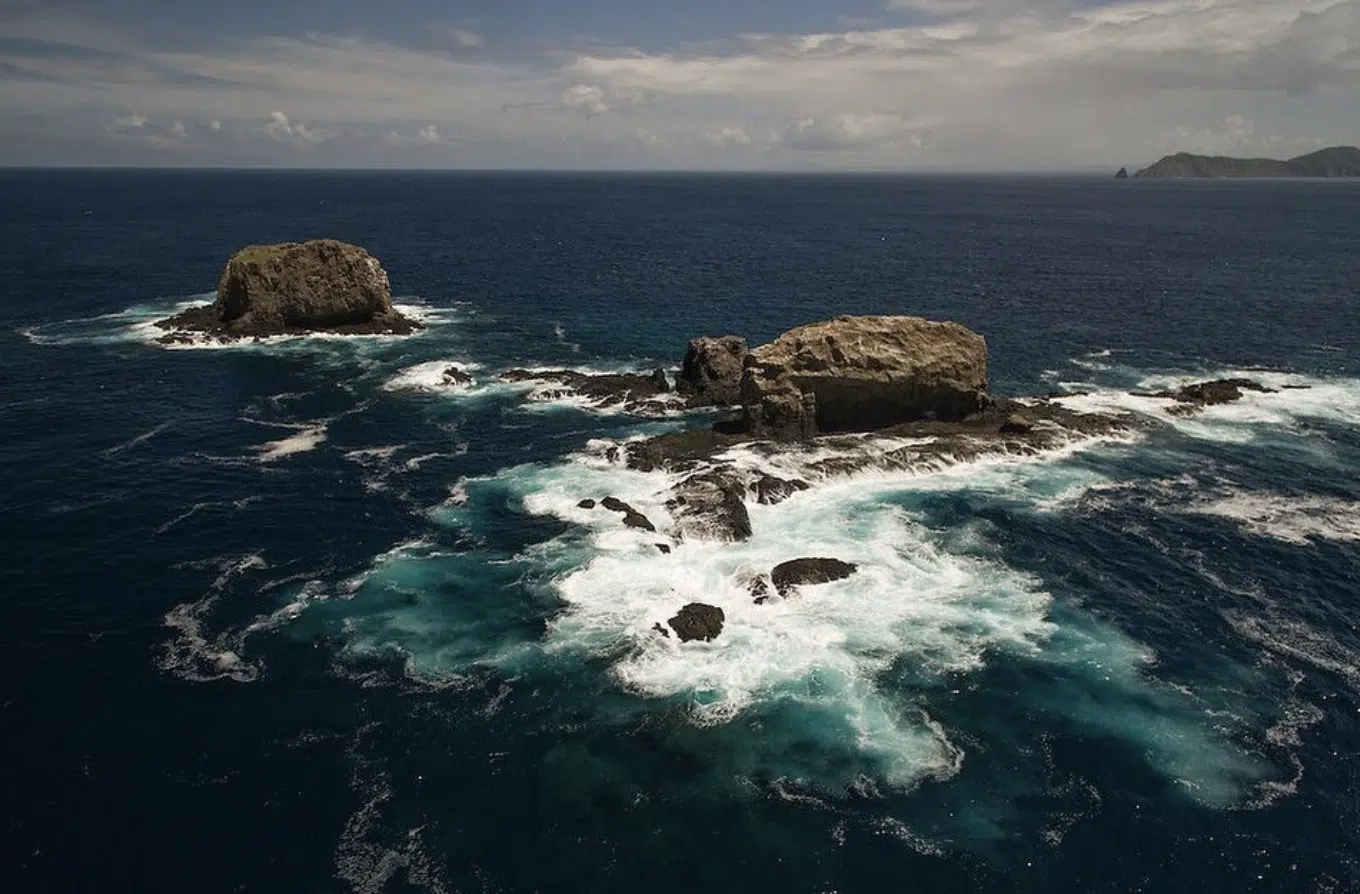
To explore the Bat Islands dive site, you’ll start 30 miles offshore from Playas del Coco in Guanacaste, Costa Rica. Your trip cuts across the Gulf de Papagayo, directly leading to the islands.
You should know that the Gulf’s waters are affected by wind, which means sea conditions are assessed daily to ensure a safe adventure.
When you arrive at the Bat Islands Costa Rica, you’ll dive at the Big Scare dive site, situated on the outermost island of the chain.
The Big Scare dive site is famous for its sightings of the often feared BULL SHARK, which can grow up to 6 to 7 meters in length.
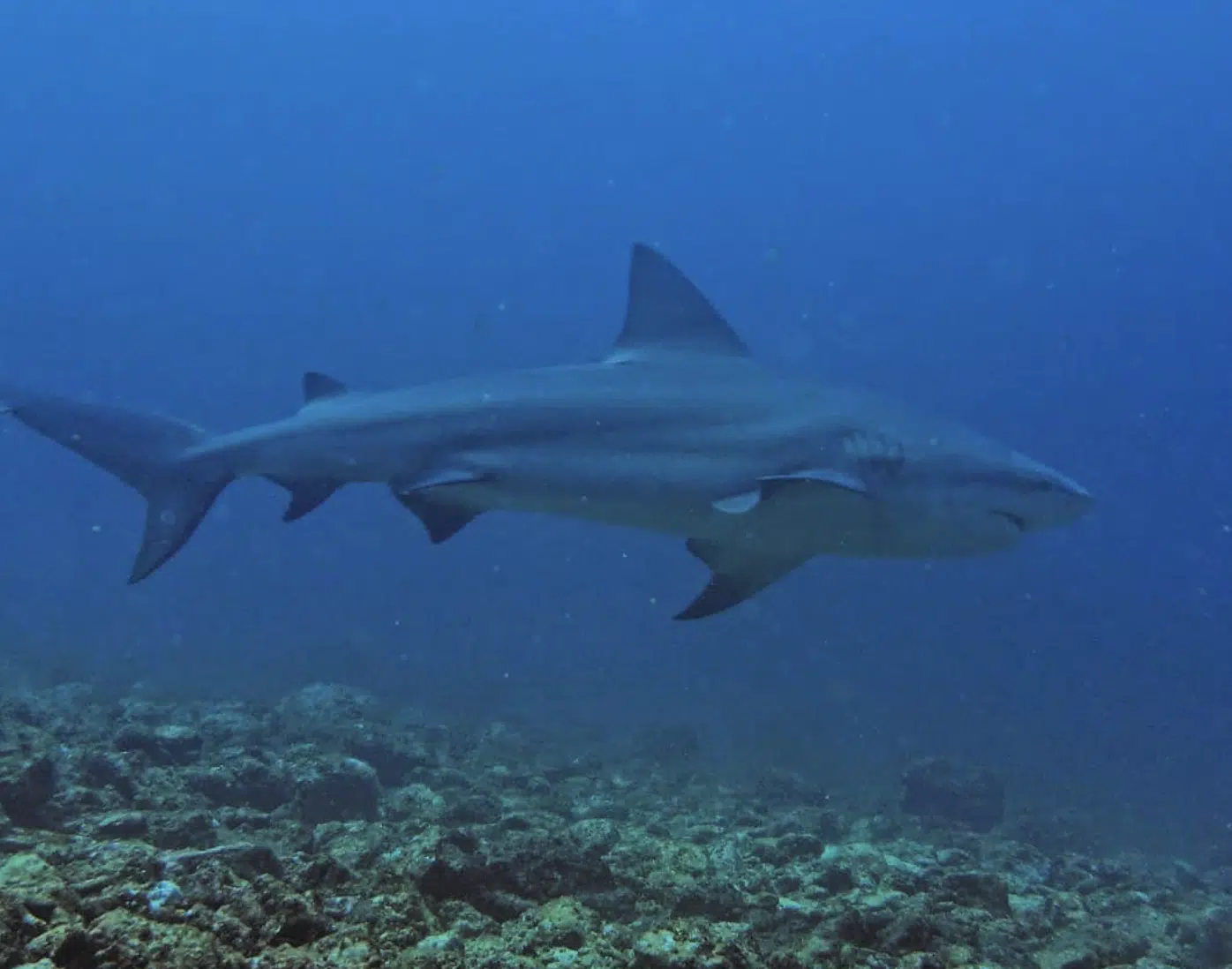
Marine biologists are actively studying these sharks in the area to better understand their visiting patterns.
Don’t forget that due to strong currents and the depth of dives sometimes exceeding 100 feet or 30 meters, diving at the Bat Islands is not recommended for beginners.
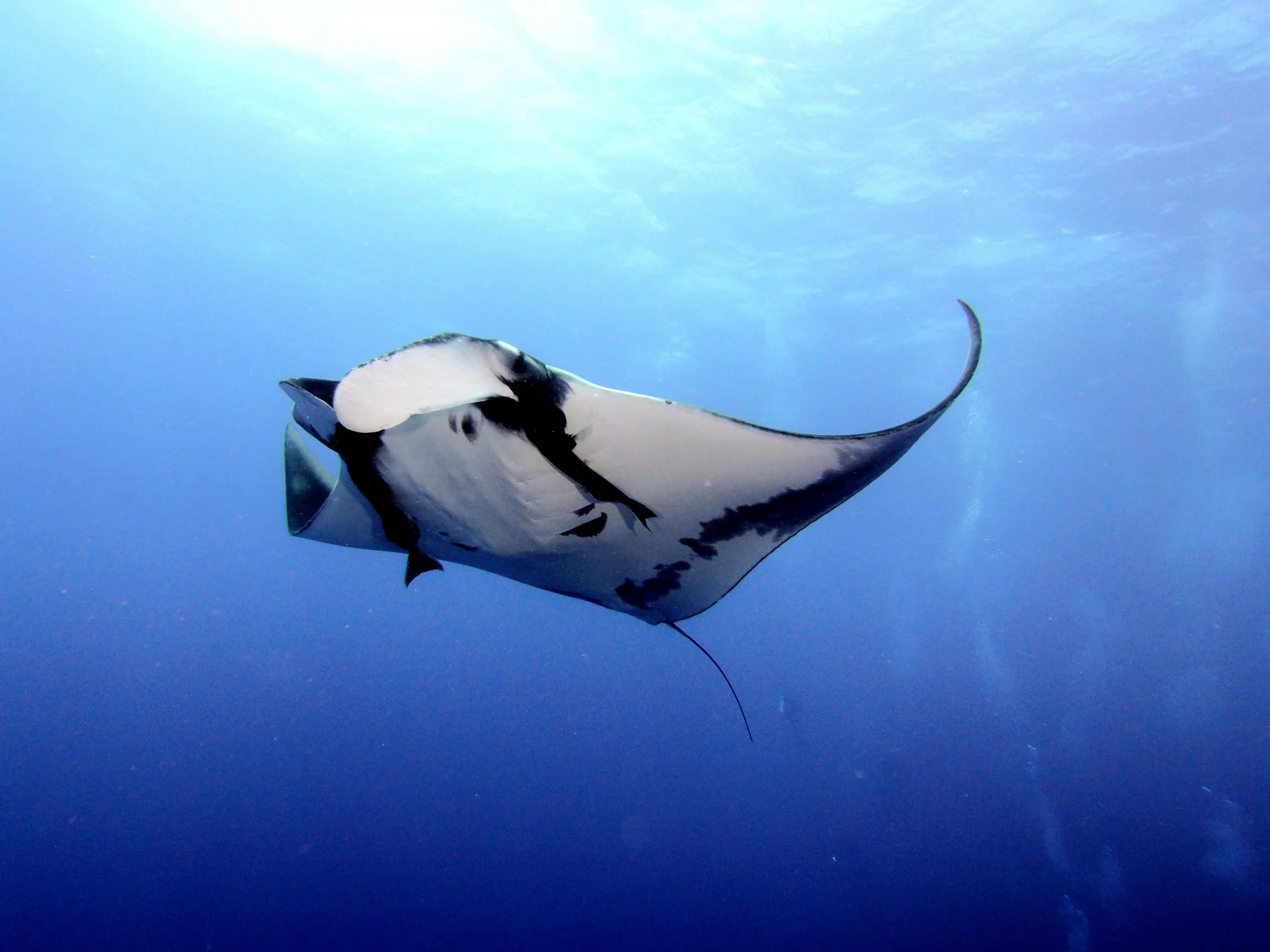
GOOD TO KNOW: The total cost of two dives at the Big Scare dive site is USD 182.00, inclusive of 13% VAT. This price covers the boat ride, tanks for two dives, and park fees. Please note that equipment rental is not included and will incur an additional charge of USD 30 per day.
Staying connected to the internet is now possible with AIRALO’s TRAVEL E SIM. Wherever you are in the world, download the app and choose which country you want to have mobile data in. Then, you are ready to show the world your Instagrammable pictures!
MANDATORY TO KNOW
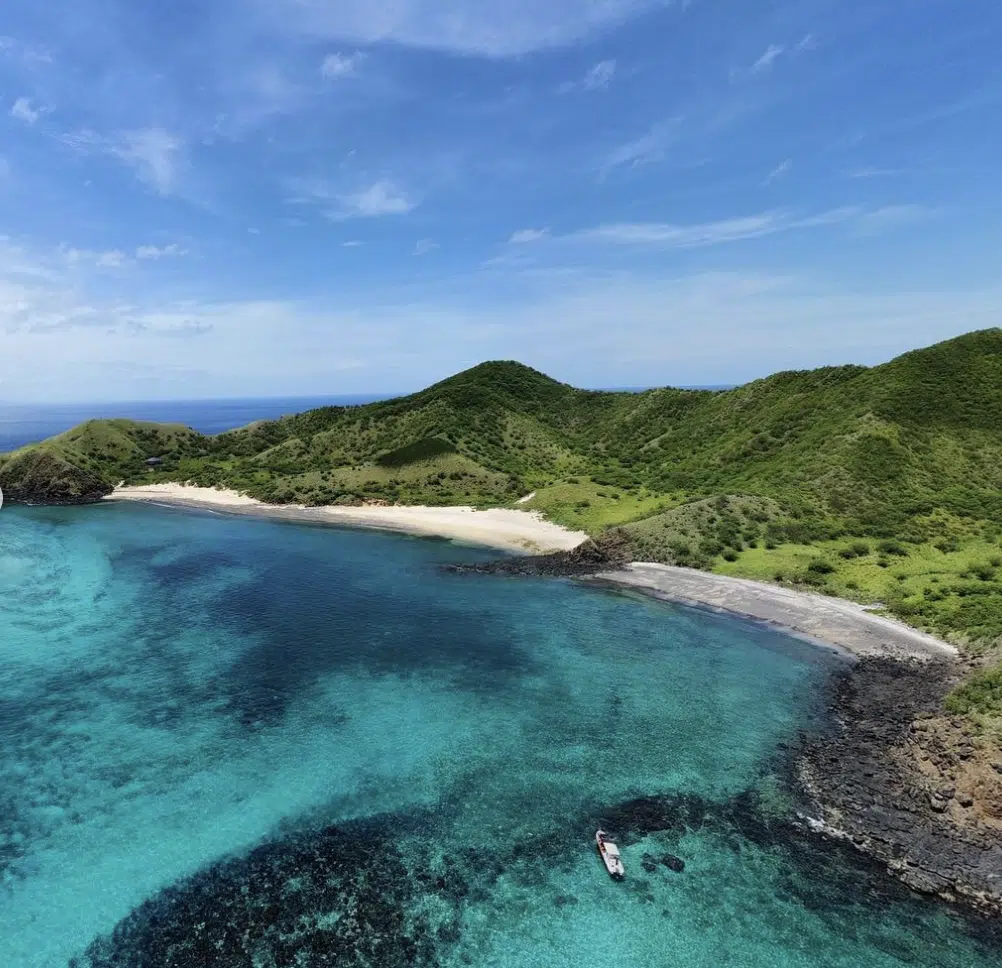
You will need some experience before going into the cold and strong currents of the Bat Islands to see the amazing marine wildlife. If this is your first scuba dive, we recommend you forget diving here for your safety.
Conditions before diving:
- Have an Advanced Open Water certification
- Have a strong stomach (we got very seasick on the long boat ride out, oops)
- Most dive shops only leave when a minimum of 4 divers have booked for the trip. Otherwise, the cost-benefit ratio is too small.
Visibility at Islas Murciélagos
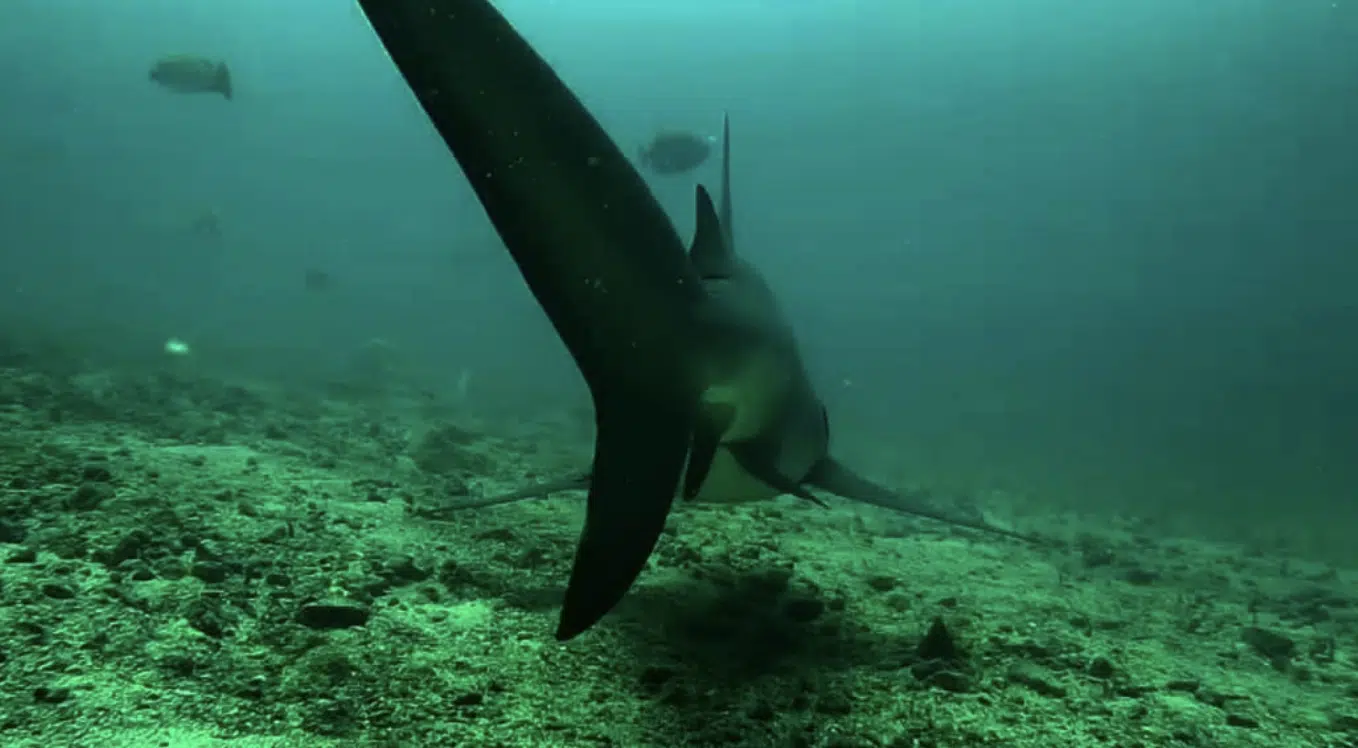
Visibility at Islas Murciélagos or Bat Islands in the water is between 30 and 100 feet (10–30 meters). The visibility can often even change within the same dive. Weather, water currents, and the time of day are the most contributing factors.
Temperature
The water temperature around the dive site at Bat Islands fluctuates with the seasons.
During the dry season, from December to April, water temperatures can be quite comfortable, averaging between 78°F and 82°F (25°C and 28°C).
However, during the wet season, from May to November, the water can become cooler, dropping to an average of 75°F to 78°F (24°C to 26°C). Overall, this is perfect for a 5mm suit.
KEEP IN MIND: Thermoclines can catch you off guard, so be prepared!
Bull Shark Diving The Bat Islands, Costa Rica
Islas Murciélagos is the most famous scuba diving site in Costa Rica because of the presence of bull sharks. Bull shark diving is one of the most amazing, once-in-a-lifetime experiences.
Bull sharks are the MOST DANGEROUS shark species, responsible for many attacks worldwide. They prefer shallow coastal waters and often swim in murky, warm water where they can find their prey. However, you should know that they are (usually) not human eaters and are still an essential part of our ocean’s ecosystem.
In Costa Rica, bull shark diving is highly regulated to ensure your safety and the sharks’ welfare. You must have an advanced open water certification and follow strict guidelines, such as not wearing shiny jewelry or making sudden movements.
Marine Life at Bat Islands
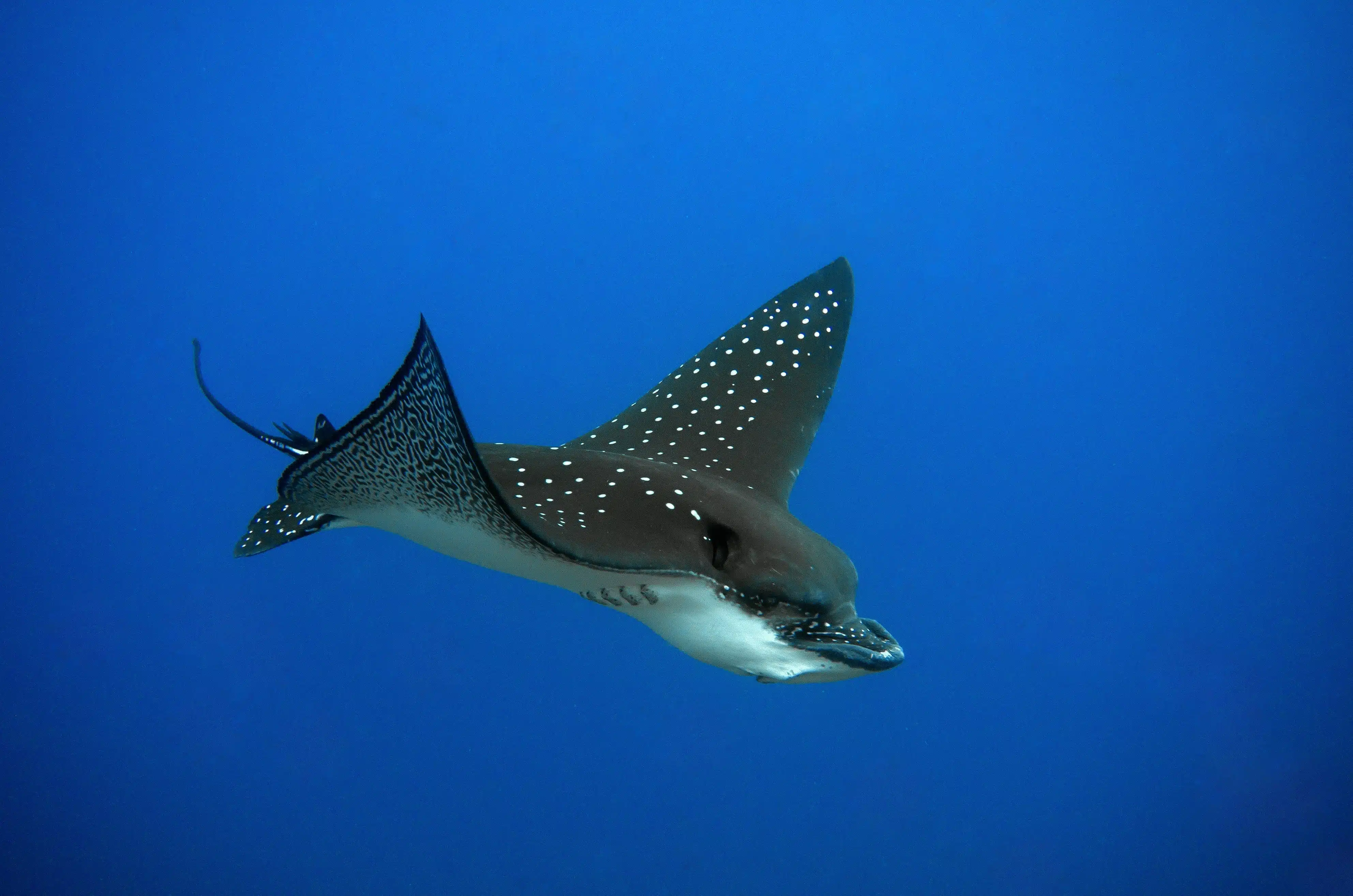
Aside from bull sharks, the Bat Islands are home to a diverse range of sea life. The strong currents in the area bring nutrient-rich waters, making it an ideal environment for various species.
At the dive sites, you may see Pacific giant mantas, eagle rays, smaller devil rays, green turtles, and even humpback whales during migration season. You can also encounter huge schools of jacks, snappers, and other colorful fish.
Check out the video below to see manta rays at Bat Islands!
Santa Rosa National Park
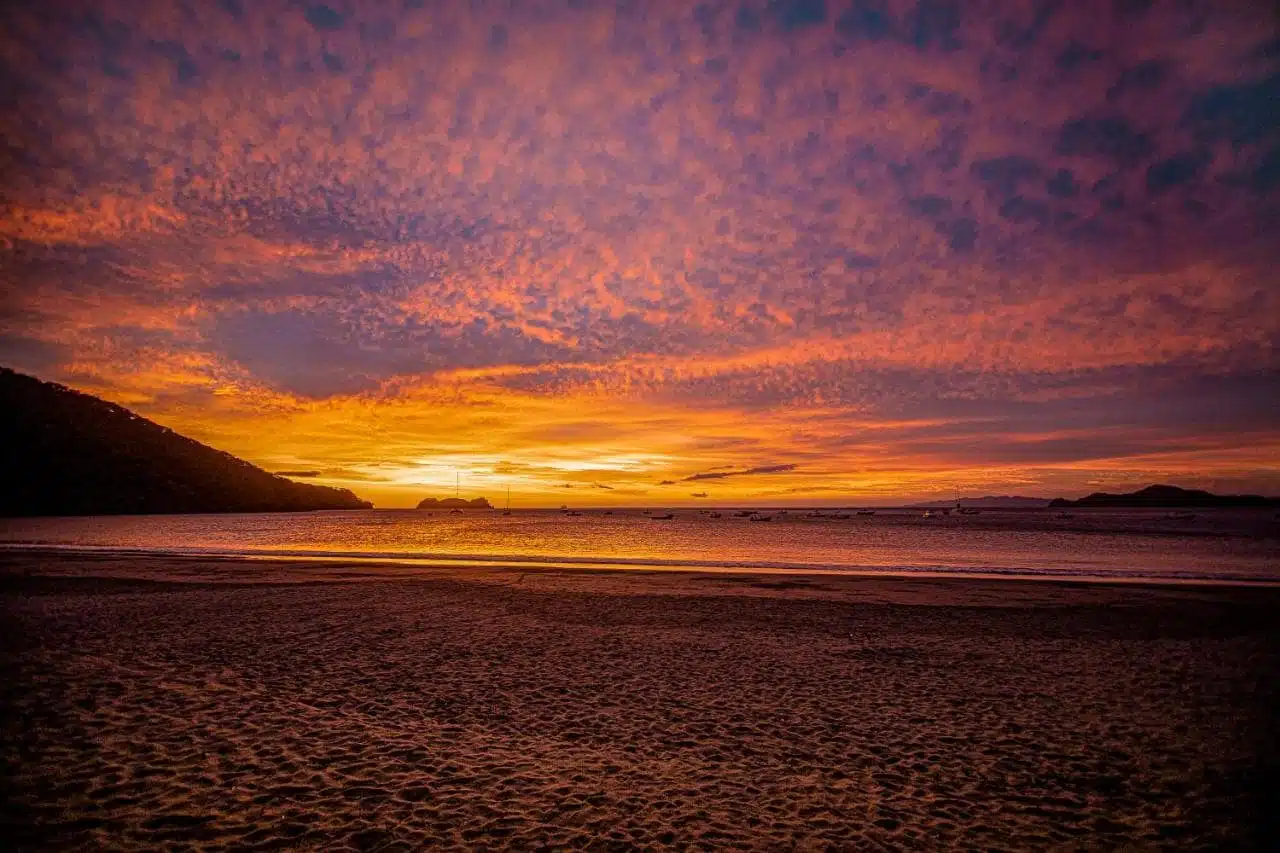
Established in 1971, Santa Rosa National Park holds the distinction of being Costa Rica’s FIRST NATIONAL PARK, spread across more than 387 square kilometers (149 square miles) of both land and water.
Santa Rosa National Park protects some of the last remaining tropical dry forests in the world. The small patch of oak forest near the entrance to the Comelco Ranch is probably representative of the original habitat of much of the park.
It is a significant part of the Guanacaste Conservation Area, a recognized World Heritage Site, dedicated to preserving a rich diversity of unique flora and fauna.
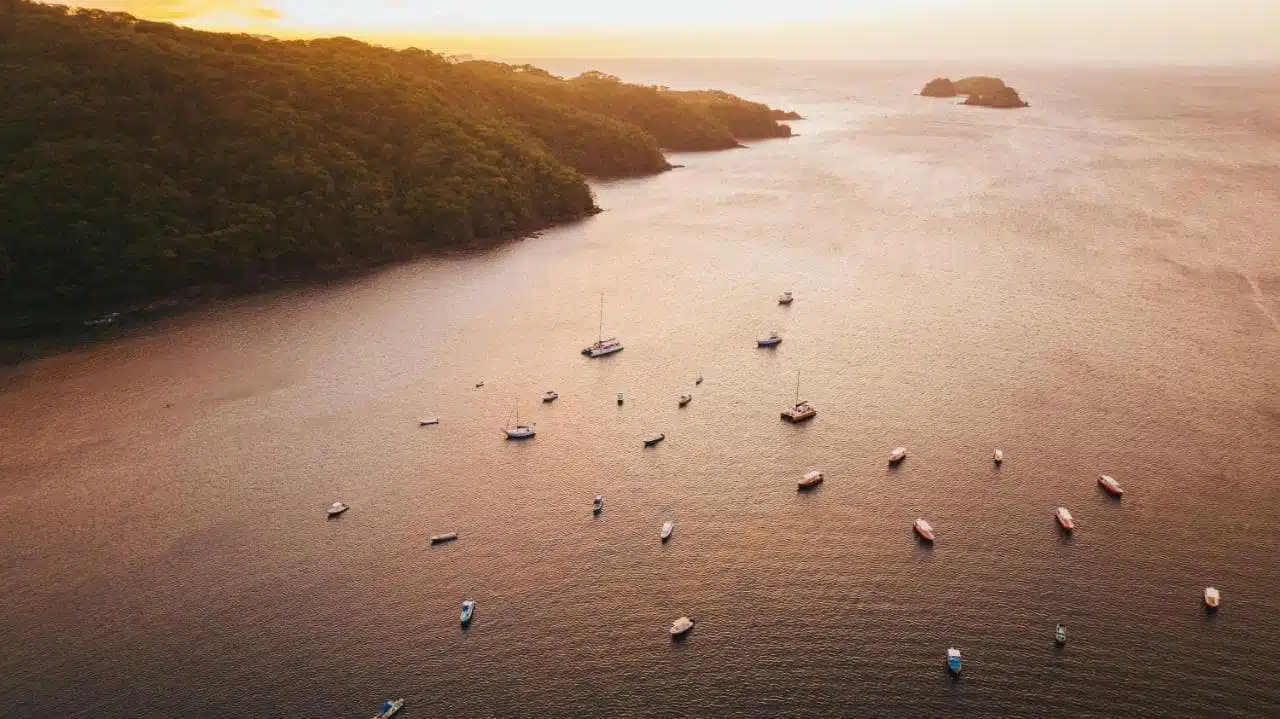
The park is divided into land and marine sectors, with the Bat Islands (Islas Murciélagos in Spanish) being a notable marine portion of Santa Rosa National Park.
The land sector requires a robust 4×4 vehicle due to the limited infrastructure.
ENTRANCE to Santa Rosa National Par
k is priced at USD 15 per person, with free access for children under the age of 9. We advise you to have the tour company handle ticket arrangements.
Where to stay at the Bat Islands Costa Rica
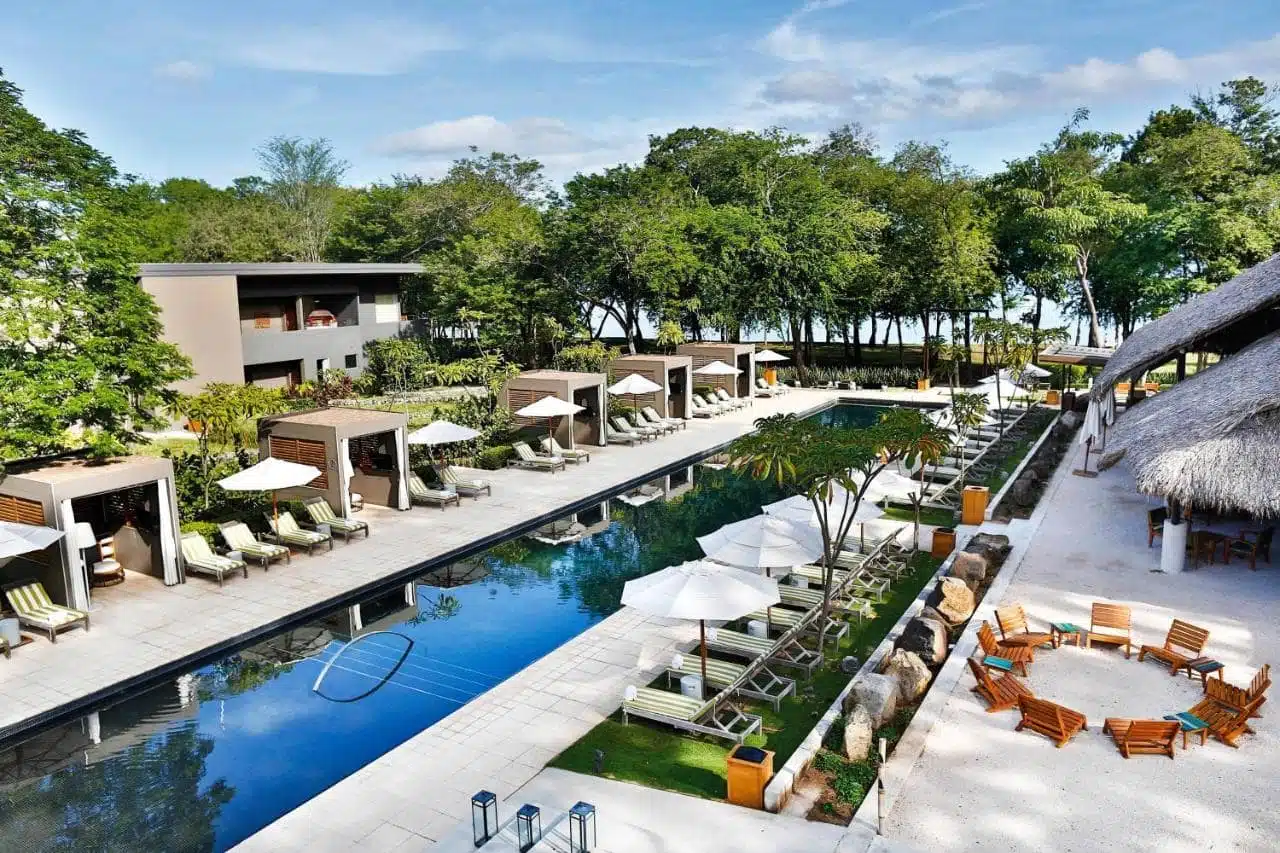
Santa Rosa National Park offers many accommodation choices. Let’s take a look at the luxury, mid-budget, and budget options!
To book all our accommodations when we travel, we always use Booking.com, they have the best prices and very flexible cancellation policies depending on the accommodation you choose.
Luxury
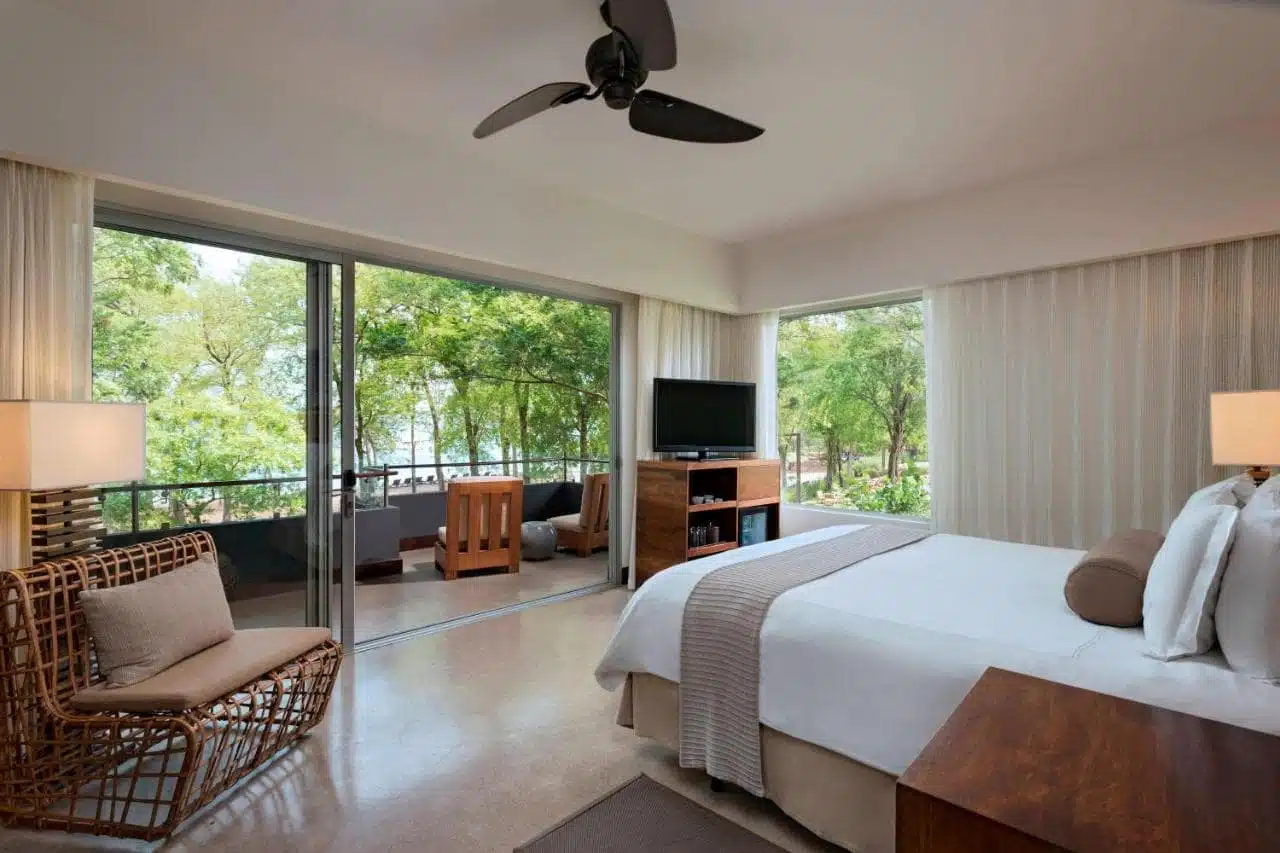
For those seeking luxury and comfort, El Mangroove, Autograph Collection, located just a 45-minute drive from Playas del Coco, offers a serene beachfront experience with elegant suites, an outdoor pool, spa services, and gourmet dining options.
Its eco-chic design seamlessly blends with the surrounding natural beauty, making it a perfect retreat for relaxation and pampering after your underwater adventures. Prices typically start at $250 USD per night, offering value for an upscale stay.
Mid Budget
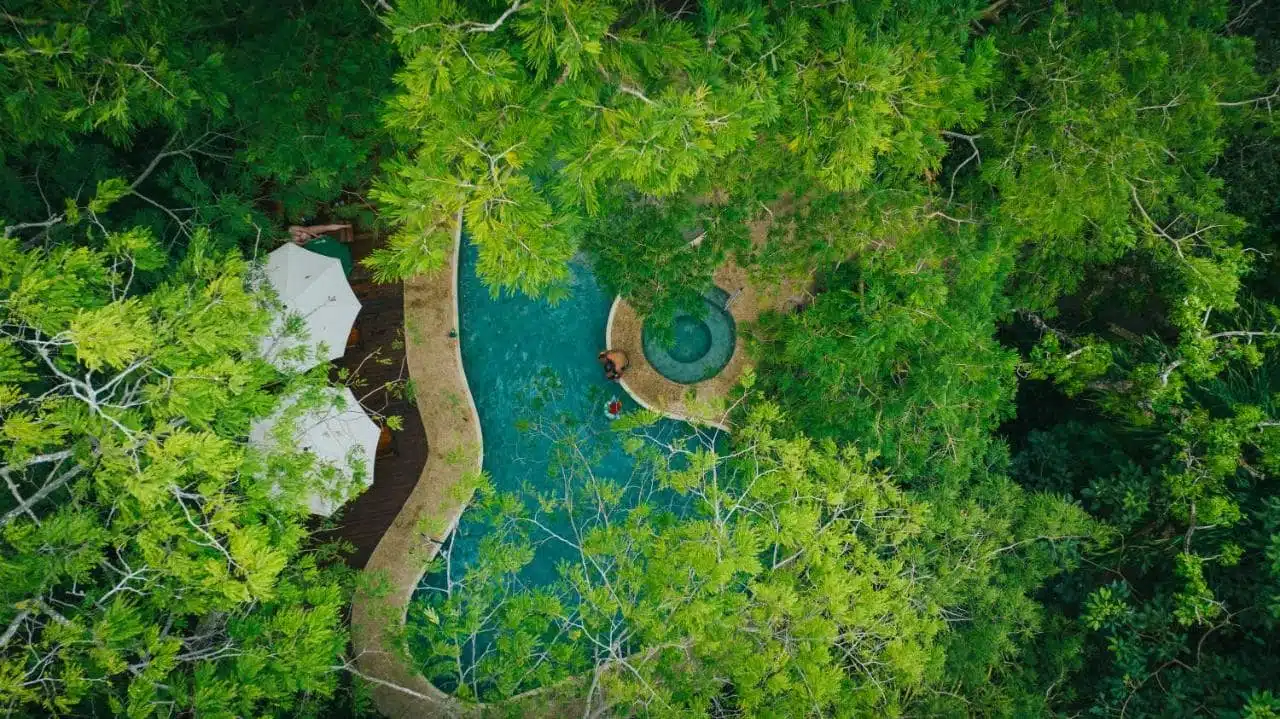
Hotel Bosque Del Mar in Playa Hermosa offers a great balance of comfort and affordability for those looking to indulge without overspending.
Just a short drive from the departure point to the Bat Islands, this beachfront hotel boasts spacious rooms, a swimming pool, direct beach access, and a restaurant serving local and international cuisine.
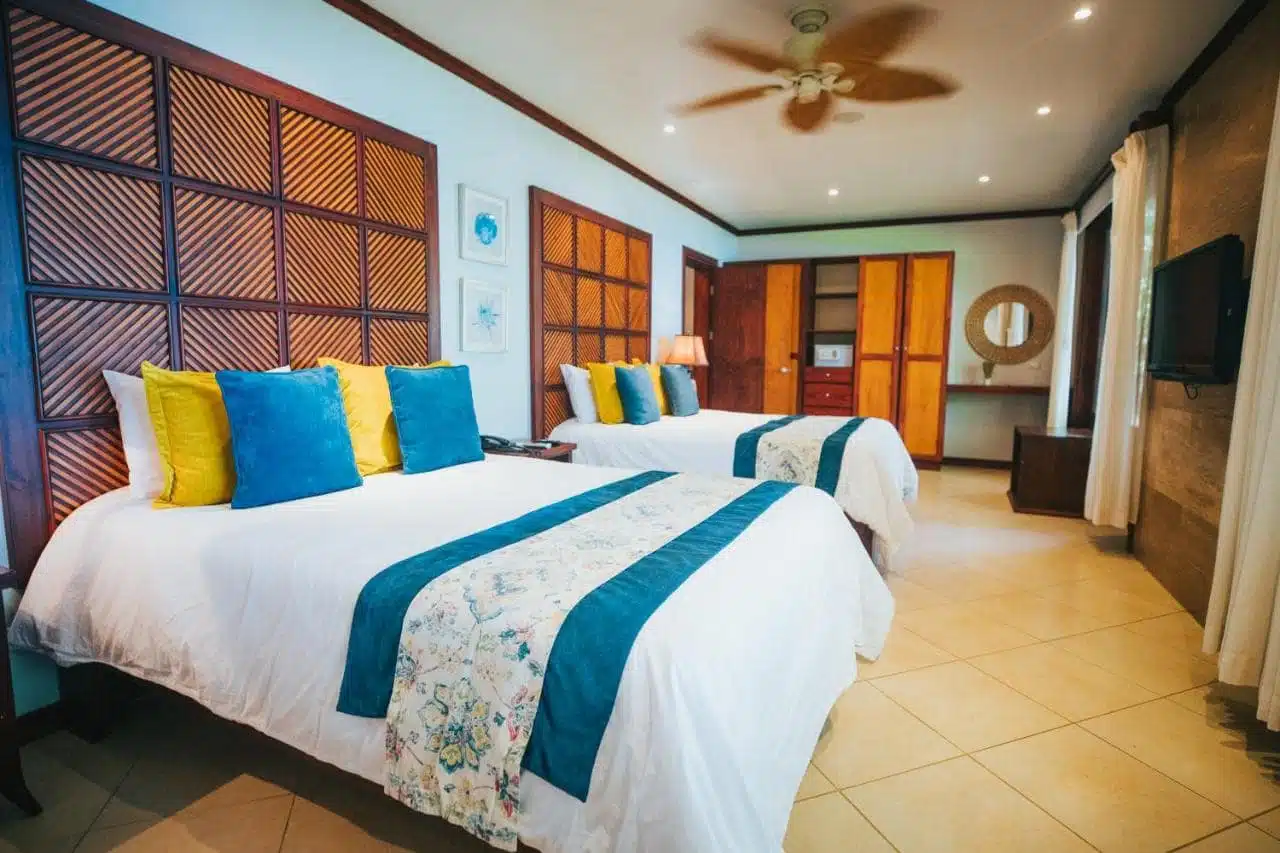
With room rates starting around $150 USD per night, it’s an excellent mid-budget option for divers and nature lovers.
Camping
If you are looking for a budget option, camping within Santa Rosa National Park itself presents a unique opportunity to connect with nature.
The park offers designated camping areas where you can pitch your tent under the stars for about $4 USD per night, per person (+ entry ticket to the park). You can take a look at the official government website.
This option not only saves money but also allows you to experience the park’s natural beauty up close.
FAQs
Where are bull sharks in Costa Rica?
Isla Murciélagos: Isla Murciélagos is located in north-west Guayana, off Santa Ros National Park, and is known as the home of numerous marine animals. Although their name literally means “Bat Islands,” they have grown to be most famous for their huge bull shark population.
Is it safe to swim with bull sharks?
How can a bull shark harm a diver? Bull sharks are believed to be dangerous animals because they have caused sharks to bite. However, sharks don’t bite humans, bull shark are only fish, and the risk of being bit by the sharks is very small.
Are there great white sharks in Costa Rica?
What is the best way to see sharks in Costa Rica? Great-white sharks tend to keep in cold waters compared to the depths of those found swimming in the tropical waters of Costa Rica’s Pacific and Caribbean coastlines. So, you won’t see a large shark swimming around when you visit Costa Rica. Please.
When Is The Best Time To Dive With Bull Sharks at Bat Islands?
In Bat Island, bull sharks typically occur between May and November. Outside of these months, the dive shop mainly stops sailing into the island as the waters change and the weather becomes unpredictable. In August and July, water temperatures peak at 28 and are generally cooler than normal but can be more relaxing.
Where in Costa Rica can you swim with whale sharks?
Although not common, whale sharks can occur at sea near Costa Rica. It’s a good thing that nobody knows when the next one will come. Our sights included sightings from the first dive in central Catania, Bat, and the dive in the Gulf of Papagayo.

